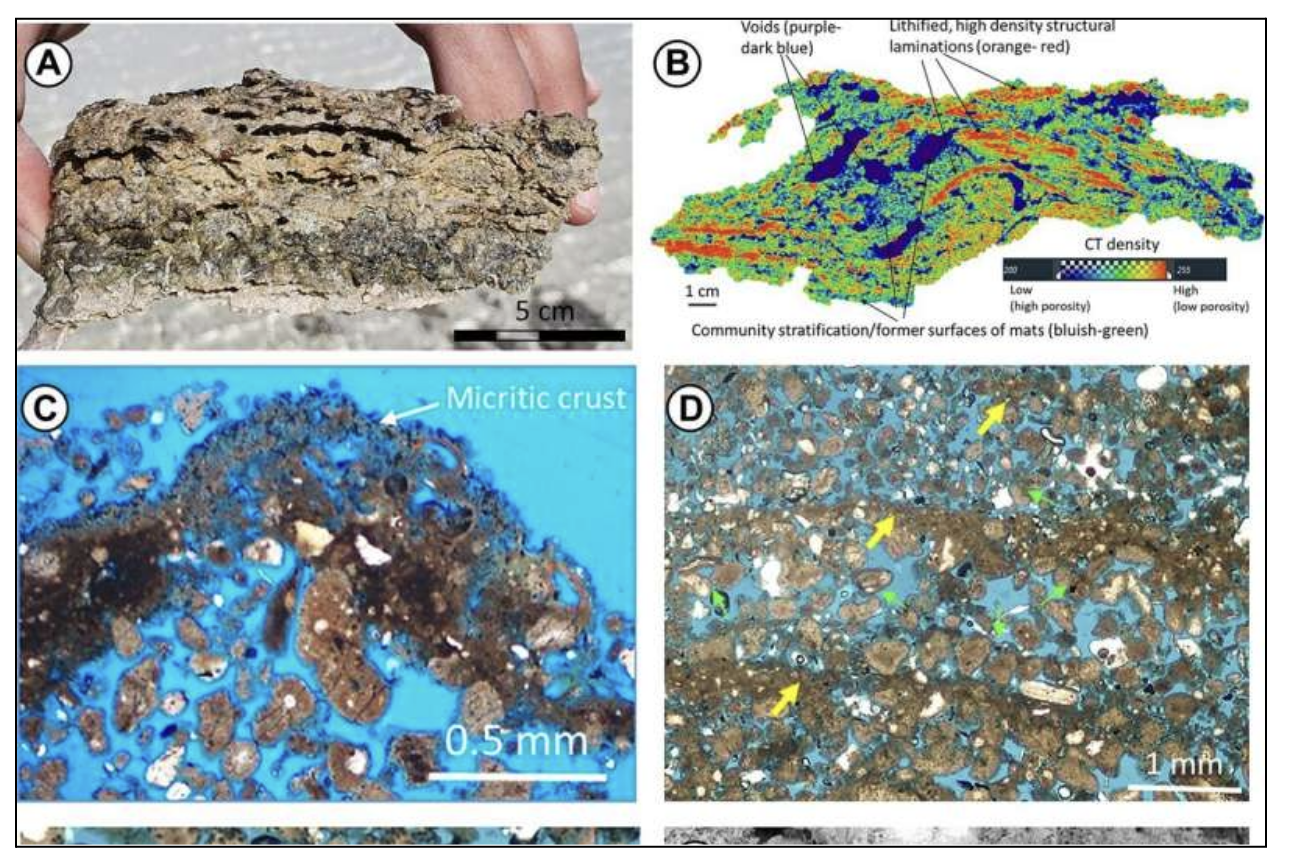News Excerpt:
Stromatolites are the earliest geological record of life on Earth. These curious biotic structures are made of algae carpets growing toward the light and precipitating carbonates.

More about News :
- Stromatolites: Stromatolites are layered structures primarily composed of limestones, formed by the growth of cyanobacteria, a type of photosynthetic microorganism also known as blue-green algae.
- These structures are one of the oldest known forms of life on Earth, dating back over 3.5 billion years. Stromatolites are primarily found in shallow aquatic environments such as lakes, lagoons, and coastal areas.
- The formation of stromatolites begins when cyanobacteria grow on surfaces such as rocks or sediment. As these microorganisms multiply, they trap and bind sediment particles together, forming layers of organic material and minerals. Over time, these layers build up, creating distinctive dome-shaped or columnar structures.
- Stromatolites are also partially responsible for the Great Oxygenation Event, which drastically changed the composition of our atmosphere by introducing oxygen.
- That oxygen initially wiped out stromatolites' competition, enabling their prominence in the Archean and early Proterozoic environment.
- However, as more life forms adapted their metabolism to an oxygenated atmosphere, stromatolites started to decline, popping up in the geologic record only after mass extinctions or in difficult environments.
Modern Stromatolites and Their Habitats:
- The bacteria are always around, but they don't usually get the chance to make stromatolites and they are largely outcompeted by corals.
- In modern times, stromatolites are relegated to niche extreme environments, such as hypersaline marine settings and alkaline lakes.
- The only known modern analogue to the biologically diverse, open shallow marine settings where most Proterozoic stromatolites developed was the Exuma Islands in the Bahamas.
Discovery of Stromatolites in Saudi Arabia:
- A new study in the journal Geology reports the discovery of living stromatolites on Sheybarah Island, on the northeastern shelf of the Red Sea in Saudi Arabia,
- Sheybarah Island is an intertidal-to-shallow subtidal setting, with regularly alternating wetting and drying conditions, extreme temperature swings between 8 °C and >48 °C, and oligotrophic conditions much like the Bahamas.
- There are several hundred stromatolites in the Sheybarah Island field, ranging from well-developed textbook examples to sheet-like structures with low relief, possibly representing juvenile forms.
Conclusion:
The discovery provides an opportunity to better understand the formation and growth of stromatolites, which could offer insights into early life and ocean evolution on Earth and assist in the search for life on other planets like Mars.


